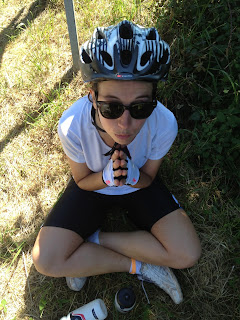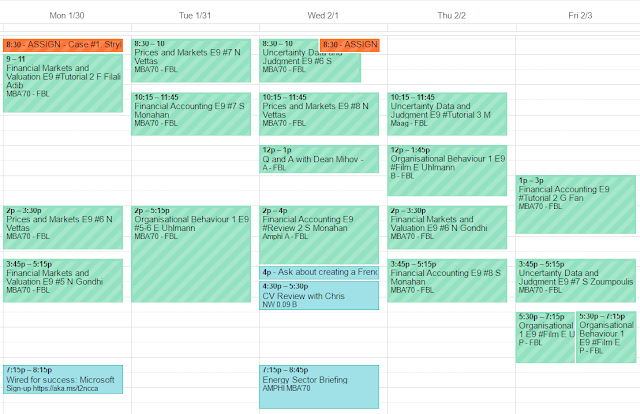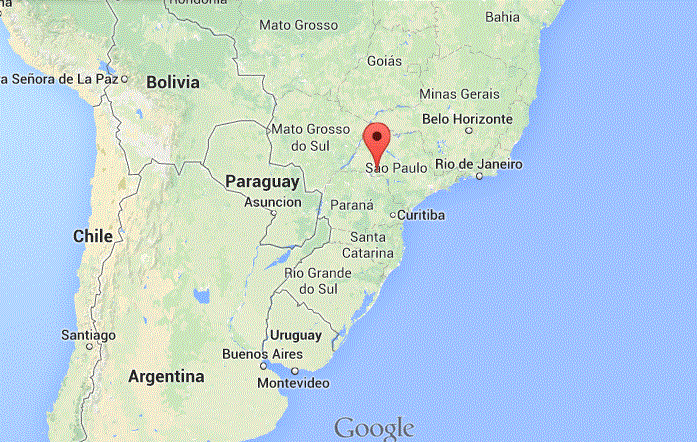Camino de Santiago
Where to begin? I arrived no problem in Spain after train, plane, plane, plane, metro, train. We spent two nights in Salamanca dining at La Casa de Las Pulgas (Sandra´s family´s new restaurant) and caught a bus to Santander in the north of Spain to begin the Camino. Sandra´s father own a pork factory, so the factory supplies all of the highest quality pork to the restaurant. An excellent business model if you ask me. Here is the famous Jamon Iberico from her home town of Guijuelo. These dried pork legs are all over the place and you just cut off what you want. Mmmm.
The second night, Spain played Brazil in the finals of the Cofederations Cup (precursor to World Cup). The Spanish were a bit arrogant going into the match and many were stunned when Brazil won 3-0.
I have a ton of photos so best to just narrate them I suppose. The Camino that we chose is the Camino del Norte (Northern Way), it is much less traveled then the more popular Camino Frances (French Way), which is the route shown in the movie The Way. Because it is less traveled we quickly learned that it is less well marked with yellow arrows, which are your guiding force that keep you on the camino. This first picture is from Santander before we knew what we were getting ourselves into. The north of Spain is much different then the south. It is still Spain, but things are done more efficient and quickly that in other parts of Spain. According to Sandra, the further south you travel, the more people and the more time things take to get done. For example, we are in the south now and it took 2 workers three days to fix the shower head at the pool.
Of course we have been eating well. Food posting with paella and octopus recipes to come.The Camino de Santiago is very buccoulic. You are constantly crossing bridges from centuries past and going through sleepy towns.
Here we found ourselves amidst rusting train cars.
The Camino is occassionally marked with signs like this, but more often very difficult to spot yellow spray painted arrows on the ground. If you´ve gone more than 1 km without spotting one, you´re going the wrong way. We learned this the hard way.
Here are some examples of the sort of landscape we were passing.
The Camino was veeeeeerrrrry rural. Here´s a horse that ran along side us.
The yellow arrow.
Sandra trying to navigate a muddy trail.
She touched bottom a bit here, but nothing a bocadillo de chorizo can´t fix.
Sandra lost her shoe in deep mud. Naturally my first instinct was to snap a picture.
Luckily, afterward there was always wine waiting for us. The Menu del Dia, menu of the day, was about 10 euors and consisted of an appetizer, main course, desert, bottle of red wine, and carbonated water.
Did I mention breathtaking views of the coast?
Little fishing town. Our itinerary was Santander, Santillana del Mar, San Vicente de la Barquera, Llanes, Villavicicios, Ribadesella, Gijon,
We met other traveleres along the way. This group has done the Camino for the last 10 years and had taken each of the different routes for about 15 days per year. Their walking sticks had a notch for each year.
Often the trail wasn´t very well marked. These shells also marked the way, but which way is it referring_
Mail and Bread.
Finally the last two days it was sunny after a Seattle-like overcast. Not bad for cycling actually, but not as beatiful.
Sandra after a brutal climb.
Another hill.
The last day we got lost for an additional 15 km. Sandra almost reached her breaking point, but we found salvation in some tapas in a small village.
Final city, Gijon. Beach.
We had to pack our bikes like this to return to Salamanca.
Now we are in Alicante at the beach. More details to come!












































Comments